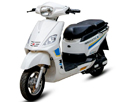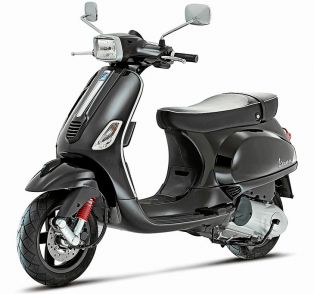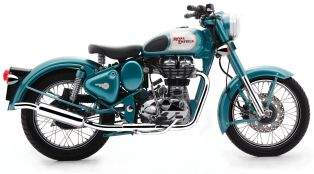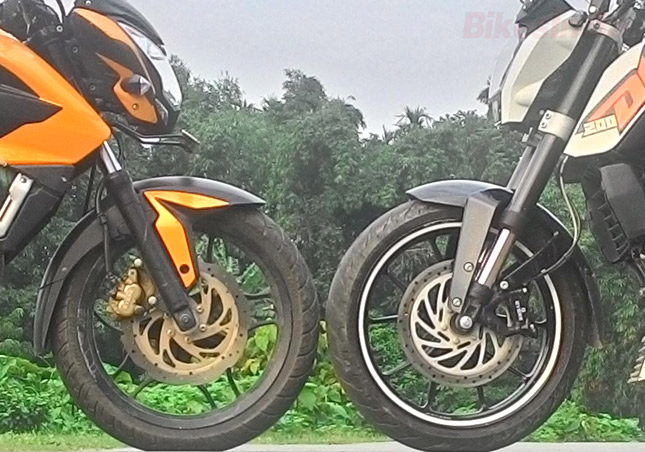 A lot of sports bikes today are getting upside down suspension setups on the front while the others are getting the regular telescopic suspension. WP is one such company who has taken a huge leap in the production of Upside down forks and KTM has used them in their offerings here in India as a default. Now it is nothing personal against telescopic suspensions, it is good, but having upside down suspension has its own rewards and issues. So in this article we are going to check out both telescopic suspension and upside down suspension and check out their merits and demerits and come to a conclusion as to which one is better and why.
A lot of sports bikes today are getting upside down suspension setups on the front while the others are getting the regular telescopic suspension. WP is one such company who has taken a huge leap in the production of Upside down forks and KTM has used them in their offerings here in India as a default. Now it is nothing personal against telescopic suspensions, it is good, but having upside down suspension has its own rewards and issues. So in this article we are going to check out both telescopic suspension and upside down suspension and check out their merits and demerits and come to a conclusion as to which one is better and why.Telescopic Suspension:
Imagine a telescope. It has two lenses on each end and the power can be adjusted by moving the telescope ends forward and backward with the line of sight being able to adjust using the interconnecting and inter-mingled barrels. The same concept is used in making telescopic suspensions. The suspension has a primary barrel and a slider bar is placed inside it providing it with free movement. Of course it is laden with a spring and fork oil inside to give the shock absorption facility. With telescopic suspension, the slider is connected to the yoke or the triple clamp of the handle while the hollow tube or damping unit is laden on to the wheel. This ends up with the entire weight of the shock system on to the wheel which kind of makes the movement of the wheel and the handle a lot stiffer.
READ ALSO: Motorcycle Fork Oil Explained- Do You Also Need To Replace The Fork Oil As You Do The Engine Oil?
It does not matter in small capacity bikes as they do not have to go through quick direction changes owing to less speed but in case of faster bikes, it does hamper the performance a bit. But overall the production and assembly of this suspension is a lot cheaper and easy to service as well since there are no chances of any spillage of any fluids and also the suspension is a lot stable even on the bumpiest sections of the roads. So the overall absorption is a lot better and sturdy for telescopic suspension.
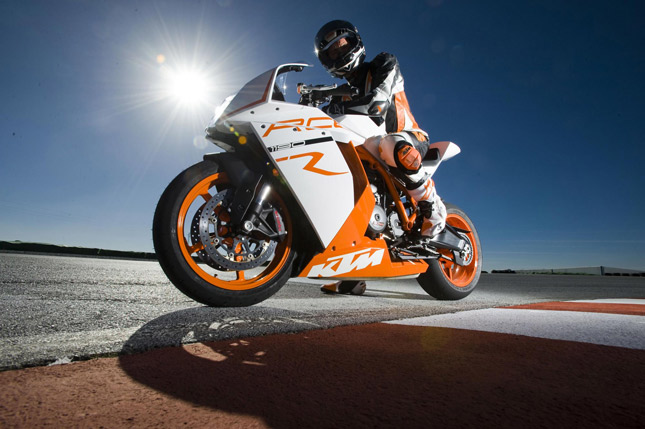 Upside Down Suspension (USD):
Upside Down Suspension (USD):In Upside down, as the name suggests, the suspension is fitted in a completely opposite direction. This means the handle yoke is connected to the damping unit while the sliders are connected to the wheel of the bike. Now this setup is not so easy and if you wish to make changes to the original bike, then a lot of modifications need to be made. This is the reason why it is always preferable to take this into account when designing the bike from scratch so that it can be designed with this angle in mind.
READ ALSO: Why Upside Down Suspensions (USDs) Are Special?
Now the reason why only the performance bikes are provided with upside down forks is for this reason. The bikes generally travel at very high speeds, and that means the steering of the bike needs to be as agile as possible. This cannot happen unless the unwanted and excess load from the front wheel is taken off and this is what upside down forks do. With the heavy stuff all connected to the frame of the bike the wheel is very much free for movement however it wants and hence it becomes easier for the bike to be maneuvered and change direction at high speeds on the go.
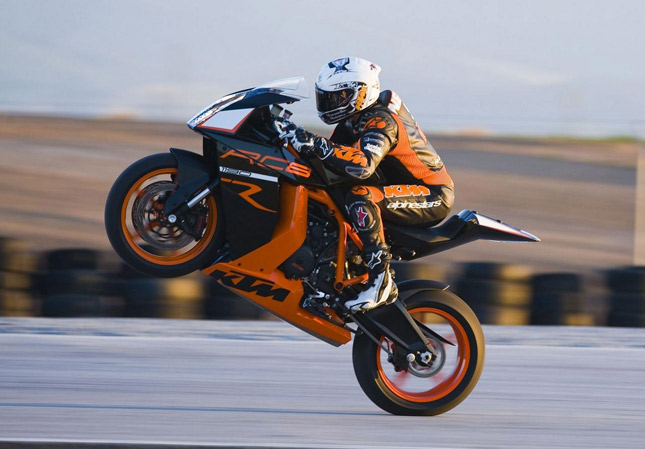 Coming to the highlights of the suspensions; we checked out the telescopic suspension in detail. And in case of upside down forks there are many advantages which we saw above but there are the demerits which also have to be taken into consideration. Upside down suspension is costly to manufacture and fit on the bike. That means you end up paying a big premium which is why one cannot find them on the budget commuters. Secondly you have to take this into consideration that there is increased shock absorption facility in upside down shocks, but it also makes it vulnerable for increased damage.
Coming to the highlights of the suspensions; we checked out the telescopic suspension in detail. And in case of upside down forks there are many advantages which we saw above but there are the demerits which also have to be taken into consideration. Upside down suspension is costly to manufacture and fit on the bike. That means you end up paying a big premium which is why one cannot find them on the budget commuters. Secondly you have to take this into consideration that there is increased shock absorption facility in upside down shocks, but it also makes it vulnerable for increased damage.READ ALSO: Monoshock Suspension Vs Dual Shocks
The shocks are exposed and the only supports they have are sliders which are nothing but bars of metal and having movement to them. So they not being fixed, the overall sturdiness to them is on the lesser side. Yes, they do not have to take on the entire weight like before, but it still might get a bit too much and the chances of the fork using its alignment due to a hard bump on our beloved Indian roads is always high. Plus in case of damage, though gravity will always make sure there could be chances of the oils getting leaked and running on the wheels and discs which will hamper the shocks’ capability and the bike overall leading into accidents.
So all in all, if you plan to run your bike on the highways most of the times which are in somewhat good shape, then yes you can opt for upside down forks, but for someone who has the running within city limits and broken roads, then please put in conventional telescopic suspension on as it will provide better protection to the bike.
By: Pratik Patole





